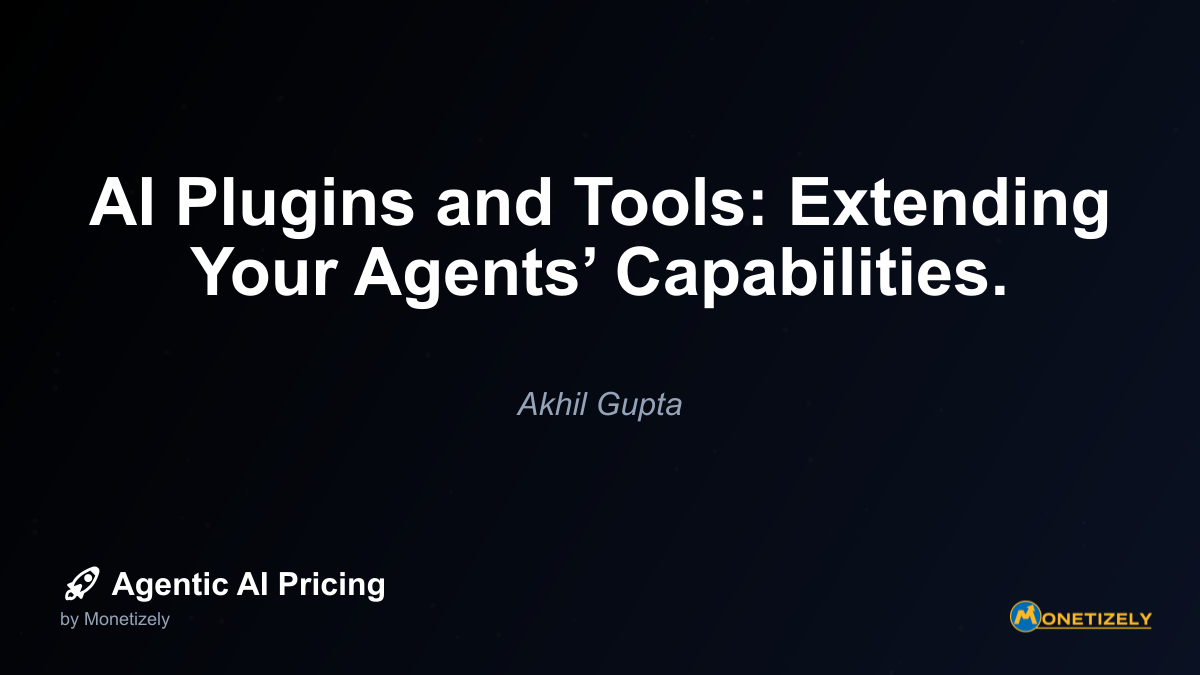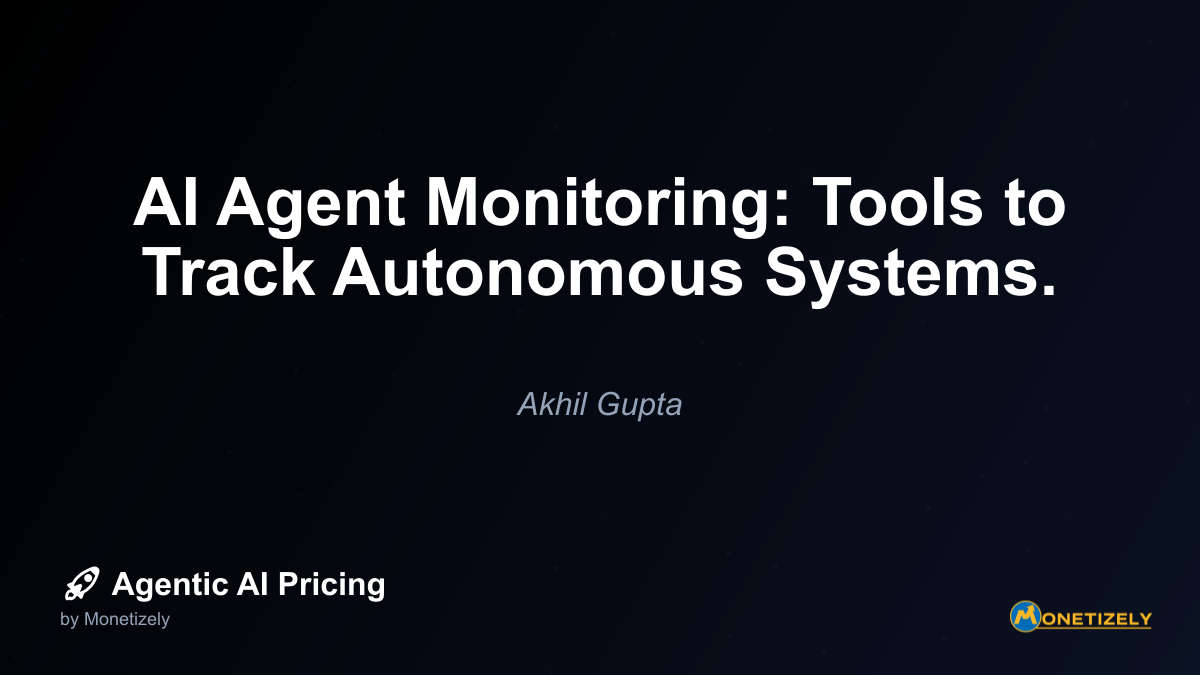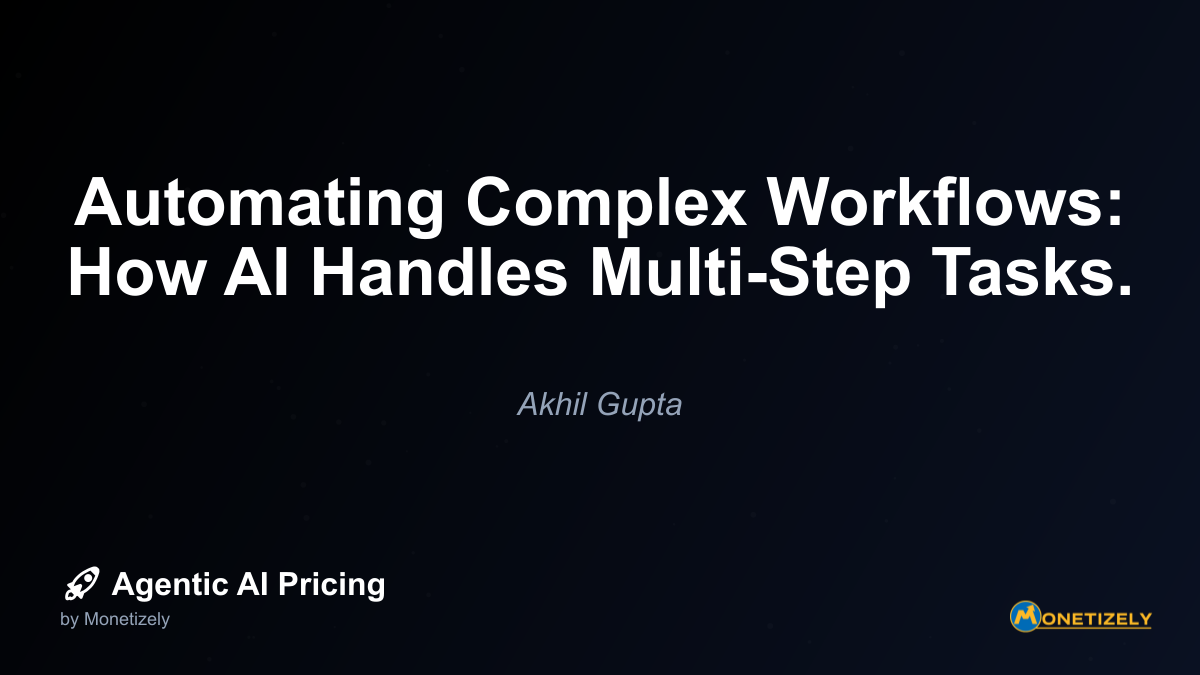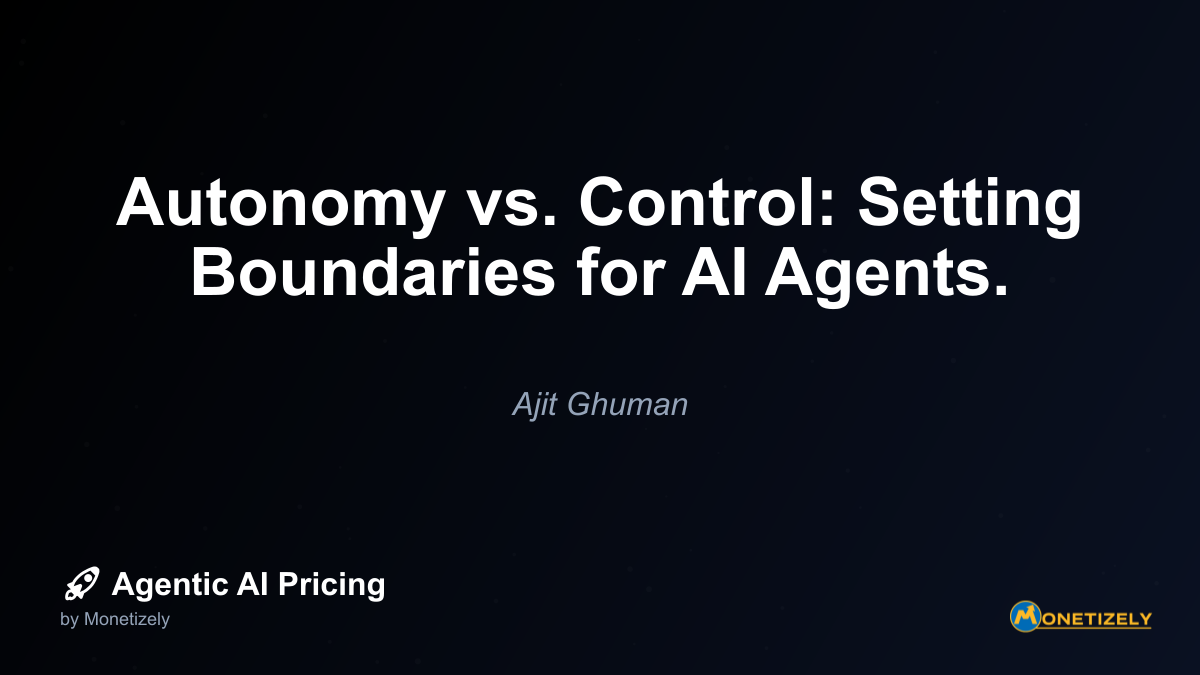· Ajit Ghuman · Technical Insights · 10 min read
Understanding APIs: How AI Agents Connect with Your Systems.
AI and SaaS Pricing Masterclass
Learn the art of strategic pricing directly from industry experts. Our comprehensive course provides frameworks and methodologies for optimizing your pricing strategy in the evolving AI landscape. Earn a professional certification that can be imported directly to your LinkedIn profile.
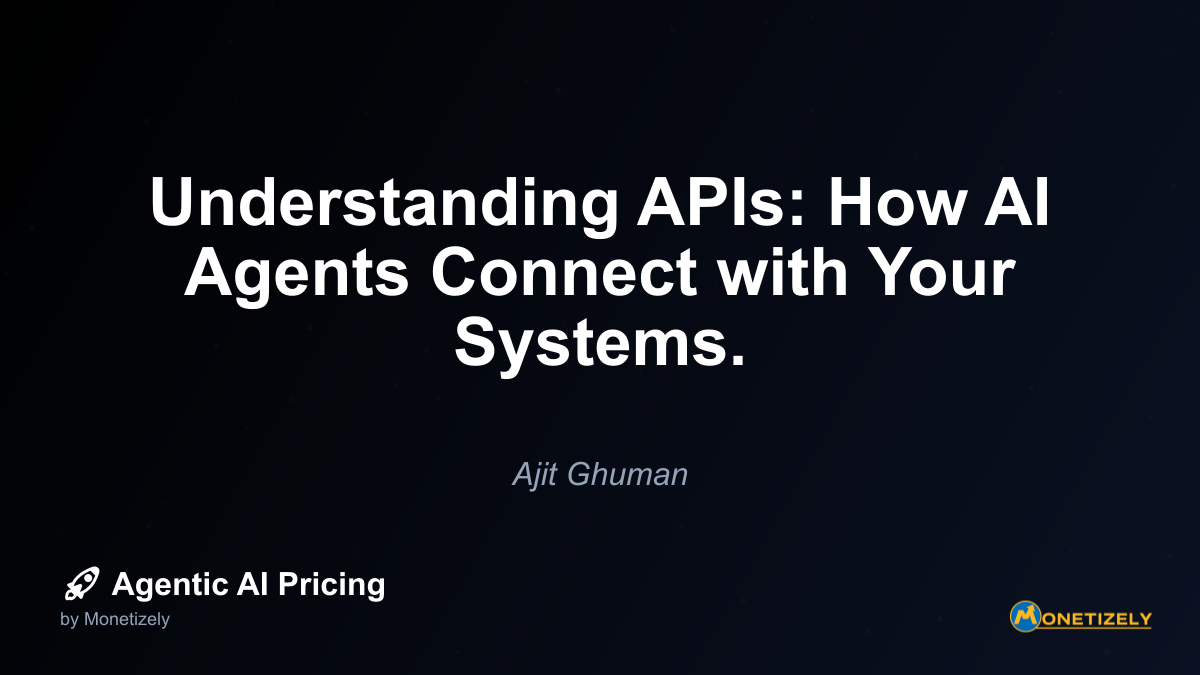
The digital landscape is rapidly evolving, with artificial intelligence becoming increasingly integrated into business operations. At the heart of this integration lies a critical but often misunderstood technology: the Application Programming Interface, or API. For organizations looking to implement AI agents into their workflows, understanding APIs isn’t just a technical necessity—it’s a strategic imperative that directly impacts pricing models, implementation costs, and overall return on investment.
APIs serve as the essential bridges that allow AI agents to communicate with your existing systems, databases, and software applications. Without these connective pathways, even the most sophisticated AI would remain isolated, unable to access the data it needs or execute the actions that make it valuable. As businesses increasingly adopt agentic AI solutions, the quality and robustness of API connections have become key factors in determining both implementation success and ongoing operational costs.
What Exactly Is an API?
An API, or Application Programming Interface, is a set of protocols, routines, and tools that specify how software components should interact. In simpler terms, an API acts as a messenger that takes requests, tells a system what you want to do, and returns the response back to you.
Think of an API as a waiter in a restaurant. You, the customer, don’t go directly into the kitchen to prepare your meal. Instead, you communicate your order to the waiter, who then relays it to the kitchen staff. The kitchen prepares your meal according to your specifications, and the waiter brings it back to you. In this analogy:
- You are the AI agent making a request
- The waiter is the API
- The kitchen is the application or database
- The meal is the data or action you requested
APIs follow specific rules and formats that both the requesting system (the AI agent) and the responding system (your application) understand. These rules typically define:
- What kinds of requests can be made
- How these requests should be structured
- What data formats are acceptable
- How responses will be formatted and delivered
The Critical Role of APIs in AI Agent Functionality
For AI agents to deliver value, they need to do more than just process information—they need to interact with your existing systems. This is where APIs become indispensable.
Data Retrieval and Processing
AI agents often need to access data stored across multiple systems within your organization. Through APIs, these agents can:
- Query customer information from your CRM
- Access inventory levels from your ERP system
- Retrieve historical transaction data from your financial systems
- Pull relevant documents from your content management system
Without API access, AI agents would be limited to working with manually uploaded data or information provided directly through user interactions, severely limiting their utility and increasing the human labor required to keep them functional.
Action Execution
Beyond just accessing information, truly valuable AI agents can take actions within your systems. Through APIs, agents can:
- Update customer records
- Place orders or process returns
- Schedule appointments
- Send notifications or communications
- Generate and distribute reports
These action-oriented capabilities transform AI from a passive information tool into an active participant in your business processes.
Real-Time Responsiveness
APIs enable AI agents to operate with real-time data, making them responsive to current conditions rather than working with outdated information. This is particularly valuable in dynamic environments where conditions change rapidly, such as:
- Financial markets
- Inventory management
- Customer service scenarios
- Resource allocation systems
Types of APIs Relevant to AI Agent Integration
When planning AI agent implementations, understanding the different types of APIs you might encounter is crucial for accurate cost projection and technical planning.
REST APIs (Representational State Transfer)
REST APIs are the most common type used in web services and follow a straightforward request-response model using standard HTTP methods (GET, POST, PUT, DELETE).
Advantages for AI integration:
- Widely adopted and well-documented
- Stateless nature simplifies scaling
- Language-independent
- Relatively easy to implement
Potential challenges:
- May require multiple calls to accomplish complex tasks
- Can be inefficient for operations requiring large amounts of data
SOAP APIs (Simple Object Access Protocol)
While less common in modern implementations, SOAP APIs are still found in many enterprise systems, particularly in financial services, healthcare, and government applications.
Advantages for AI integration:
- Built-in error handling
- Strong security features
- Formal contract between systems via WSDL (Web Services Description Language)
Potential challenges:
- More complex and verbose than REST
- Higher bandwidth requirements
- Steeper learning curve for implementation
GraphQL APIs
Developed by Facebook and increasingly popular, GraphQL allows clients to specify exactly what data they need, potentially reducing the number of API calls required.
Advantages for AI integration:
- Precise data retrieval (no over-fetching or under-fetching)
- Single request can retrieve data that would require multiple REST calls
- Strong typing system reduces errors
Potential challenges:
- Less widespread adoption means fewer developers with expertise
- Can be complex to implement on the server side
- May introduce performance concerns with very complex queries
Webhook APIs (Event-Driven APIs)
Webhooks allow systems to “subscribe” to events, with the API sending notifications when specific events occur rather than requiring constant polling.
Advantages for AI integration:
- Real-time updates without continuous checking
- Reduces unnecessary API calls
- Efficient for event-monitoring use cases
Potential challenges:
- Requires endpoints that can receive incoming requests
- Error handling can be more complex
- May require additional security considerations
API Authentication and Security Implications
When integrating AI agents with your systems through APIs, security becomes a paramount concern. Different authentication methods have varying implementation complexities and security profiles, directly impacting your integration costs and risk exposure.
API Keys
The simplest form of authentication, API keys are long strings that must be included with each API request.
Implementation considerations:
- Relatively simple to implement
- Typically sent as headers or query parameters
- Limited granularity for permissions
Security implications:
- If intercepted, provide full access to API
- No built-in expiration mechanism
- Difficult to revoke individual access without affecting all systems using the key
OAuth 2.0
A protocol that allows third-party applications to access resources on behalf of users without exposing credentials.
Implementation considerations:
- More complex implementation requiring token management
- Supports different grant types for various scenarios
- Requires additional server-side infrastructure
Security implications:
- Tokens can have limited scopes and lifetimes
- Refresh token mechanism allows secure long-term access
- Separation between authentication and resource access
JWT (JSON Web Tokens)
Self-contained tokens that securely transmit information between parties as a JSON object.
Implementation considerations:
- Tokens contain encoded information, reducing database lookups
- Can be used with OAuth or as a standalone solution
- Requires proper implementation of signature verification
Security implications:
- Information in tokens can be read if intercepted (though not modified if properly signed)
- Typically short-lived to mitigate risk of theft
- Cannot be revoked before expiration without additional infrastructure
Common API Limitations That Impact AI Agent Performance
Understanding potential API limitations is crucial when planning AI agent deployments, as these constraints can significantly affect both performance and pricing models.
Rate Limiting
Most APIs restrict how many calls can be made within a specific time period, typically expressed as requests per second, minute, or hour.
Business implications:
- May require premium API tiers for high-volume applications
- Can create bottlenecks during peak usage periods
- May necessitate complex queuing systems for mission-critical operations
Mitigation strategies:
- Implement caching to reduce redundant calls
- Design for batch processing where possible
- Consider asynchronous processing for non-time-sensitive operations
Data Volume Constraints
Some APIs limit the amount of data that can be transferred in a single request or over a specific time period.
Business implications:
- May increase processing time for large datasets
- Can result in unexpected costs if pricing is based on data volume
- May require architectural changes to handle large-scale operations
Mitigation strategies:
- Implement pagination for large data retrieval operations
- Compress data where supported
- Filter data at the source to reduce transfer volumes
Functionality Limitations
Not all APIs provide the full range of functions that might be needed for comprehensive AI agent integration.
Business implications:
- May require integration with multiple APIs to achieve desired functionality
- Could necessitate custom development to bridge functionality gaps
- Might limit the scope of what your AI agent can accomplish
Mitigation strategies:
- Conduct thorough API capability assessment during planning
- Consider middleware solutions to extend API functionality
- Develop custom connectors for critical but limited APIs
API Integration Costs and Considerations for AI Implementations
When budgeting for AI agent deployments, API integration costs can represent a significant portion of both initial and ongoing expenses.
Initial Integration Costs
The upfront expenses associated with connecting your AI agent to existing systems through APIs.
Development resources:
- API client development or configuration
- Authentication implementation
- Error handling and retry logic
- Testing across various scenarios
Security assessments:
- Penetration testing of new API connections
- Data flow analysis
- Compliance verification for regulated industries
Documentation and knowledge transfer:
- Internal documentation of integration points
- Training for support and maintenance personnel
- Process documentation for troubleshooting
Ongoing Operational Costs
The continuous expenses related to maintaining and scaling API connections.
API usage fees:
- Per-call charges from third-party APIs
- Tiered pricing based on call volume
- Data transfer costs
Monitoring and maintenance:
- API health monitoring
- Performance optimization
- Adaptation to API changes and versioning
Scaling considerations:
- Increased API costs as usage grows
- Potential need for dedicated infrastructure
- Additional development for performance optimization
Best Practices for API Design in AI-Integrated Systems
For organizations developing their own APIs to support AI agent integration, following established best practices can significantly reduce long-term costs and improve system reliability.
Consistent Design Patterns
Establishing and maintaining consistency across your API ecosystem simplifies integration and reduces development overhead.
Implementation recommendations:
- Standardize naming conventions (e.g., camelCase or snake_case)
- Use consistent resource paths and hierarchies
- Maintain uniform error response structures
- Apply consistent pagination mechanisms
Comprehensive Documentation
Well-documented APIs reduce integration time and support costs while improving developer experience.
Essential documentation elements:
- Interactive API reference (e.g., Swagger/OpenAPI)
- Authentication examples
- Rate limiting specifications
- Sample requests and responses for each endpoint
- SDK examples in relevant programming languages
Versioning Strategy
Proper API versioning prevents disruption when updates are needed while allowing for innovation.
Effective approaches:
- URL-based versioning (e.g.,
/v1/resources) - Header-based versioning
- Clear deprecation policies with adequate transition periods
- Backward compatibility requirements for minor versions
Understanding the various pricing models for AI agents is closely related to API considerations, as integration complexity often directly impacts implementation costs and ongoing operational expenses.
Real-World Examples of API-Enabled AI Agent Capabilities
To illustrate the practical impact of robust API connections, consider these examples of AI agents leveraging APIs to deliver business value:
Customer Service Enhancement
An AI agent integrated with multiple internal systems can provide comprehensive support:
- Accessing customer history via CRM API to provide personalized service
- Querying product information through inventory management APIs
- Initiating return processes via order management system APIs
- Updating customer records to reflect interactions
- Escalating complex issues to human agents through ticketing system APIs
Sales Process Optimization
AI agents can streamline complex sales workflows through API connections:
- Retrieving prospect information from marketing automation platforms
- Accessing pricing and discount approval systems
- Updating sales forecasts in financial planning systems
- Generating contracts through document management APIs
- Scheduling follow-up activities in team calendaring systems
Supply Chain Management
API connections enable AI agents to optimize inventory and logistics:
- Monitoring inventory levels across multiple warehouses
- Triggering reorder processes when thresholds are reached
- Optimizing shipping routes through logistics partner APIs
- Updating customers on order status through communication APIs
- Analyzing supplier performance through procurement system connections
The Future of APIs in Agentic AI Ecosystems
As AI capabilities continue to evolve, the API landscape is adapting to support more sophisticated agent interactions.
API Standardization Initiatives
Industry efforts to standardize APIs for common AI functions are gaining momentum, potentially reducing integration costs and improving interoperability.
Notable developments:
- OpenAI’s function calling standards
- Industry-specific API standardization efforts
- Open source API definition frameworks
AI-Optimized API Protocols
New API protocols designed specifically for AI-to-system communications are emerging to address the unique requirements of agent interactions.
Emerging characteristics:
- Support for contextual information preservation
- Efficient handling of large language model outputs
- Built-in explanation capabilities for AI decisions
- Enhanced security features for autonomous operations
Calculating ROI for AI agent implementations becomes more straightforward when API integration costs and capabilities are properly accounted for in the planning process.
Conclusion: Strategic API Planning for Successful AI Agent Deployment
The successful implementation of AI agents within your organization depends heavily on the quality and comprehensiveness of your API strategy. As you plan your AI initiatives, consider these key takeaways:
Inventory your API landscape before selecting AI solutions to ensure compatibility with your existing systems.
Budget realistically for integration costs, including both initial development and ongoing maintenance expenses.
Prioritize security and compliance in your API connections, particularly for systems handling sensitive data.
Consider API limitations when setting expectations about AI agent capabilities and performance.
Develop a clear API governance model that addresses ownership, maintenance responsibilities, and change management processes.
By approaching API integration as a strategic component of your AI implementation rather than a mere technical detail, you can significantly improve both the cost-effectiveness and functional capabilities of your AI agent deployments.
The bridge between artificial intelligence and your business systems is only as strong as the APIs that connect them. Investing in robust, secure, and well-designed API infrastructure is not just a technical necessity—it’s a business imperative for organizations seeking to maximize the value of their AI investments.
Co-Founder & CEO
Ajit is the author of Price To Scale, a top book on SaaS Pricing and is the Founder of Monetizely. Ajit has led and worked in pricing and product marketing at firms like Twilio, Narvar and Medallia. His work has been featured in Forbes and VentureBeat. Ajit regularly consults with software companies from Seed stage to post-IPO on pricing strategy. Ajit is also a highly-rated co-instructor for 'The Art of SaaS Pricing and Monetization' on Maven.
Pricing Strategy Audit
Let our experts analyze your current pricing strategy and identify opportunities for improvement. Our data-driven assessment will help you unlock untapped revenue potential and optimize your AI pricing approach.

